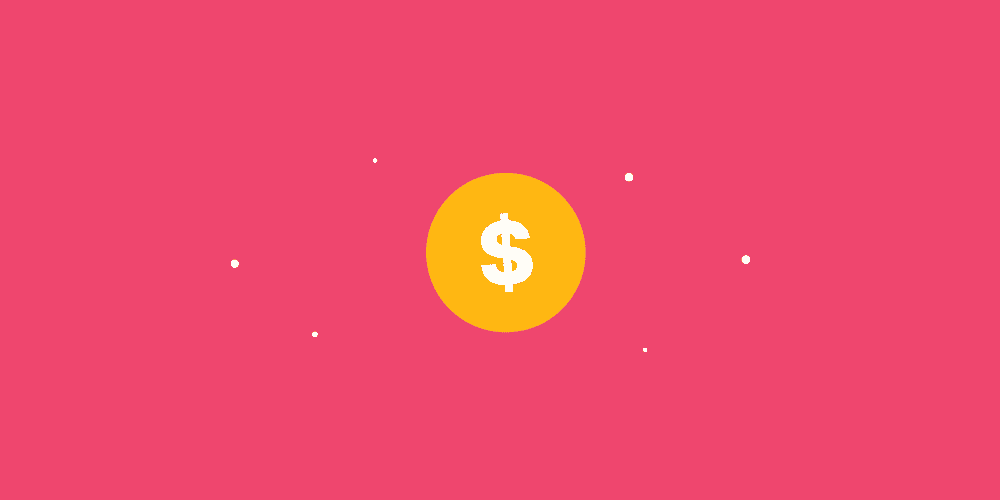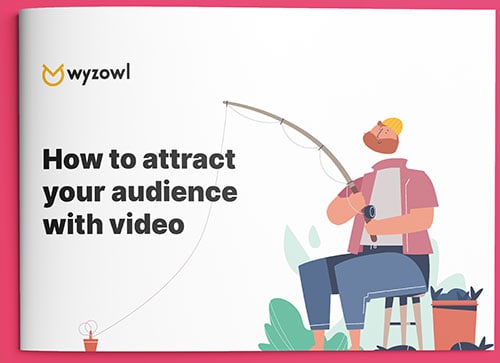Last updated on 19th February 2024
YouTube demonetization – the bane of every content creator’s existence. You pour your heart and soul into crafting engaging videos, only to have your hopes dashed by that dreaded notification.
But fear not, because in this guide, we’re diving deep into the world of demonetization and equipping you with the knowledge and strategies you need to bounce back stronger than ever.
What is YouTube demonetization?
This could be for a number of reasons including…
- Content Guidelines Violation: If your video violates YouTube’s content guidelines, such as containing graphic violence, hate speech, or sexually explicit material, it may be demonetized.
- Copyright Issues: If your video contains copyrighted material without proper permission or falls under fair use but is mistakenly flagged by YouTube’s algorithms, it could result in demonetization.
- Misleading Metadata: YouTube may demonetize videos that have misleading titles, descriptions, tags, or thumbnails, which can mislead viewers or violate YouTube’s policies.
- Inappropriate Ads: If your video is deemed not suitable for all advertisers due to its content, such as controversial topics or sensitive subjects, it may be demonetized or receive limited advertising.
- Reused Content: Videos that consist primarily of content reused from other sources without adding significant original commentary or value may be subject to demonetization.
- Community Guidelines Violation: If your video violates YouTube’s community guidelines, such as engaging in harassment, cyberbullying, or promoting harmful or dangerous activities, it may be demonetized.
Why did your video get demonetized?
So, now you know what YouTube demonetization is, but why has it happened to you?
There are many topics considered not suitable for ads. Here’s the list of the main ones as given by YouTube:
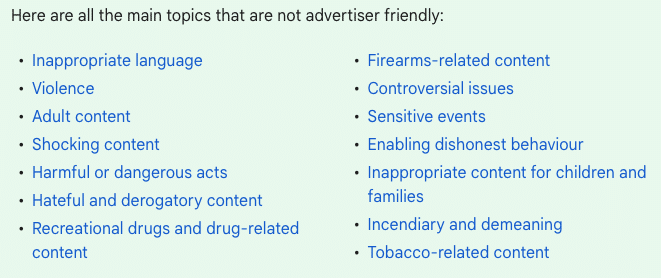
This list seems pretty straight-forward and understandable. Of course, advertisers don’t want their content associated with those topics.
The problem is that the list is pretty vague and this can result in the demonetization of videos that wouldn’t normally be considered offensive or harmful at all.
For example, “sensitive events” is a broad topic. Take the pandemic for example – one of the most newsworthy stories of the century was considered by YouTube as a “sensitive event”. YouTubers found themselves demonetized for even mentioning the word in their videos, including the popular gaming channel AngryJoeShow:
Even worse, YouTube creators noticed – once again – that the same treatment is not applied to big news organizations, as you can see here with an ad appearing before a COVID-19 video from The Sun:
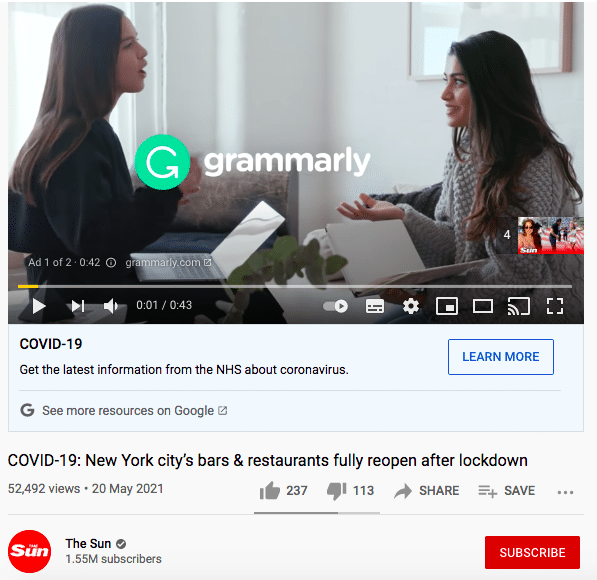
In addition to violating Youtube’s advertiser-friendly content guidelines, a Feb 2021 update means that any accounts who don’t have an up to date AdSense account will also be completely demonetized.
Watch this video to see if this applies to you and how you can fix it:
What to do when you’re demonetized by YouTube (in 2 steps)
If you do find your videos demonetized then there are steps you can take to hopefully get monetization switched back on.
Step 1: Re-evaluate your content
First things first, make sure you haven’t accidentally breached the content guidelines by rewatching your video carefully.
Look out for anything you may have said that could go against these guidelines – for example reference to sensitive topics – and make sure you censor any language that could be deemed inappropriate (e.g. swearing).
Here’s a great video that goes through an extensive list of demonetized words:
You should also make sure you aren’t using any footage or music that’s currently under copyright.
While re-evaluating your content, check your video title, thumbnail, and video description as these are all taken into account by YouTube’s algorithm.
Step 2: Contact YouTube
If you’re sure you haven’t breached any guidelines, the next thing to do is contact YouTube and ask for a manual review.
This is a way to appeal the action. It means an actual person will review the content and see if the algorithm has made a mistake. If it has – then your monetization will be switched back on. Simple!
Supplementing your YouTube income
Unfortunately, despite your best efforts, sometimes your demonetized videos will stay that way and you’ll never be able to make money from those videos again. This can be incredibly frustrating if you’re trying to make a living from your YouTube videos.
As YouTube ad revenue is such a volatile and unpredictable source of income, you should look to supplement your income in other ways.
1. Sponsorship deals
Partnering with a brand and getting your video sponsored by them is a great way to supplement your YouTube income.
Sponsorship deals are mutually beneficial because brands get their product in front of a willing audience and you get a more solid revenue stream than YouTube advertising.
This is a type of “influencer marketing” and it’s very popular among marketers, with 89% believing it to be effective.
What’s more, you don’t need to have a huge following to be considered for a sponsorship deal. 89% of advertisers prefer to use profiles with less than 100,000 followers, and 35% opt for influencers with less than 10,000 followers because they have a better engagement rate.
This can be a great revenue stream for you if your content falls outside of what’s acceptable based on YouTube’s new advertising guidelines, for example, videos that cover true crime stories.
Here’s an example from a true crime creator. You’ll see that the video begins with a sponsorship message:
Reach out to brands that you think will be a good fit with your audience, let them know important metrics (such as how many subscribers you have, how much engagement each video gets, and so on), and hopefully you’ll be able to start a brand partnership that creates a steady stream of revenue for you.
2. Sell merch
Selling merchandise allows you to increase your revenue without relying on other companies so much – as you would be with YouTube advertising and brand deals.
This is a path that many YouTubers take because it’s easy to do (through print-on-demand advertising) and it also forges a stronger connection between you and your viewers.
Merchandise can make your viewers feel like part of a club. It’s a way for them to show their support for you and, unlike when they watch an ad, they get something in return for their support.
This is something that a lot of YouTubers do. Here’s an example from MrBeast:
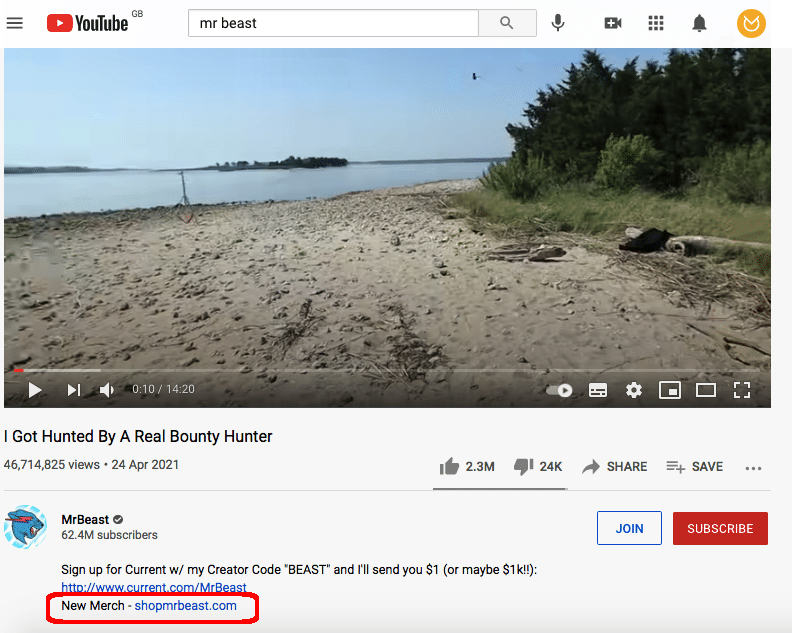
MrBeast, like many popular YouTubers and internet personalities, uses Merchline for all of his merchandising requirements.
But any print-on-demand store will suffice. Print-on-demand basically means that a product will only be made when it is ordered, so no need for you to buy 500 of your own t-shirts and cross your fingers that they sell!
3. Offer paid subscriptions
Another way to increase your YouTube revenue is to post your content to paid subscription sites like Patreon.
Patreon is a subscription service and is usually used for followers to access exclusive content that they wouldn’t get on Youtube. Subscribers sign up on a monthly basis (you have the ability to set your own pricing tiers) with a range of exclusive content, discount and other perks to reward their loyalty.
Here’s an example from the YouTuber Abroad in Japan’s Patreon page:
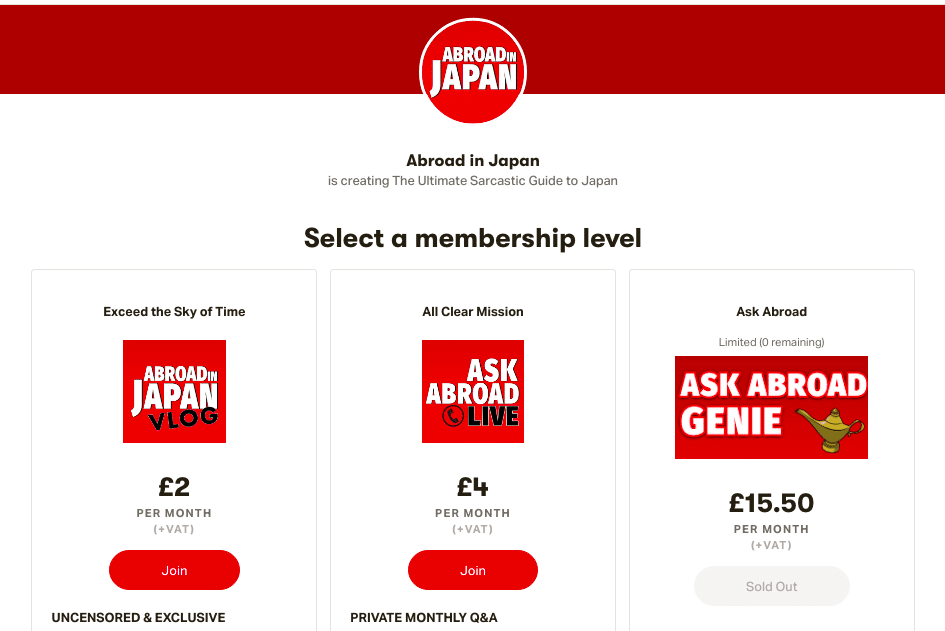
Content posted on Patreon – as well as having a much clearer and more dependable business model than YouTube monetization – allows you to be much more free in your editorial decisions. Swearing? Controversial content? Discussion of those mysterious ‘sensitive topics?’ Fill your boots!
4. Invite donations
As content creators, it can feel awkward asking for charity. But remember two things – one, that YouTube is free for viewers. Two, that viewers often build a huge amount of connection with their favourite creators. And three, that people are often more than happy to support their favourite creators financially.
Sites like Buy Me a Coffee (as you’d expect from the brand name!) offer the most basic monetisation model. “Like my content? Tip me a few dollars!”
The best way to ensure you make a steady income from YouTube is by opening up as many different revenue streams as possible – so there’s no reason why you shouldn’t try all of these methods out and see what happens!
Final thoughts
When you’ve put so much time and effort and hope into your YouTube channel it can feel really demoralizing to get demonetized.
But hopefully the tips in this article will help you to reduce your chances of getting demonetized in the future and supplement your income in other ways.
To further increase your YouTube success, check out these articles:
YouTube SEO: 10 Ways to Rank Higher

